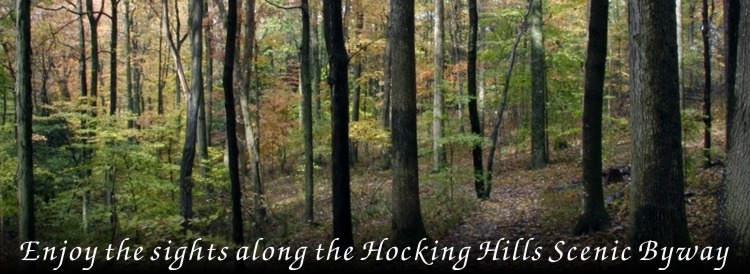|
The hollows and caves of the park complex have long attracted the people
of Ohio. Evidence of the ancient Adena culture illustrates man first
inhabited the recesses more than 7,000 years ago. In the mid 1700s several
Indian tribes traveled through or lived here including the Wyandot, Delaware
and Shawnee. Their name for the river from which the park gets its name was
Hockhocking or "bottle river." The name comes from the bottle-shaped valley
of the Hocking River whose formation is due to its one-time blockage by
glacial ice.
After the Greenville Treaty of 1795, numerous white settlers moved into
the region and Hocking County was organized in 1818. The area around the
parks began to develop in 1835 when a powder mill was built near Rock House
and a grist mill was constructed at Cedar Falls. The cave areas were well
known as scenic attractions by 1870. In 1924, the first land purchase by the
state was made to preserve the scenic features. This first parcel of 146
acres included Old Man's Cave. Subsequent purchases added acreage while the
areas existed under the Department of Forestry as State Forest Parks. The
Department of Natural Resources was created in 1949 and the new Division of
Parks assumed control of the Hocking Hills State Park complex, which today
includes six park areas. A dining lodge and cottages were opened in 1972.
These cottages, together with a campground, provide overnight facilities in
one of the most beautiful areas of Ohio. |


